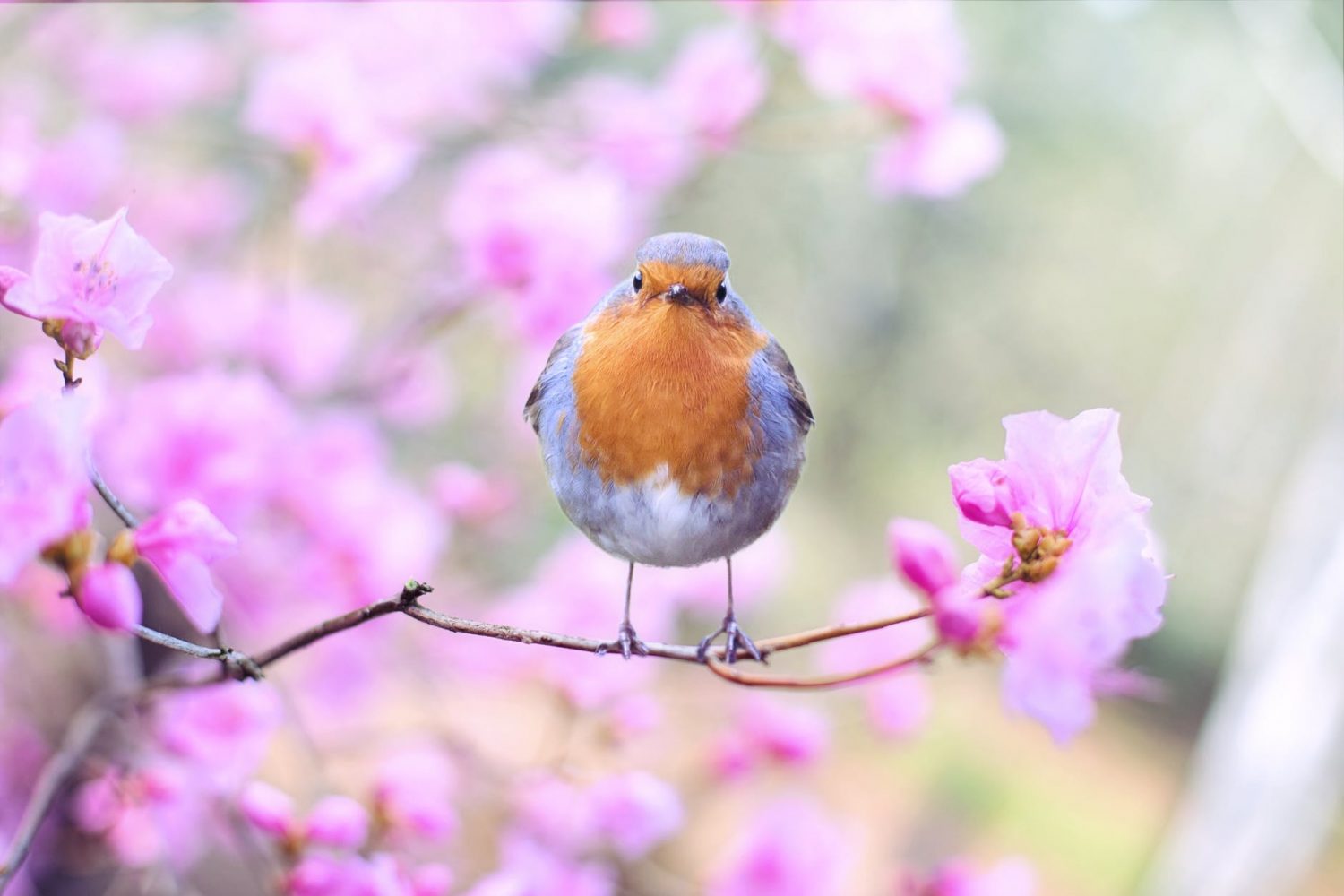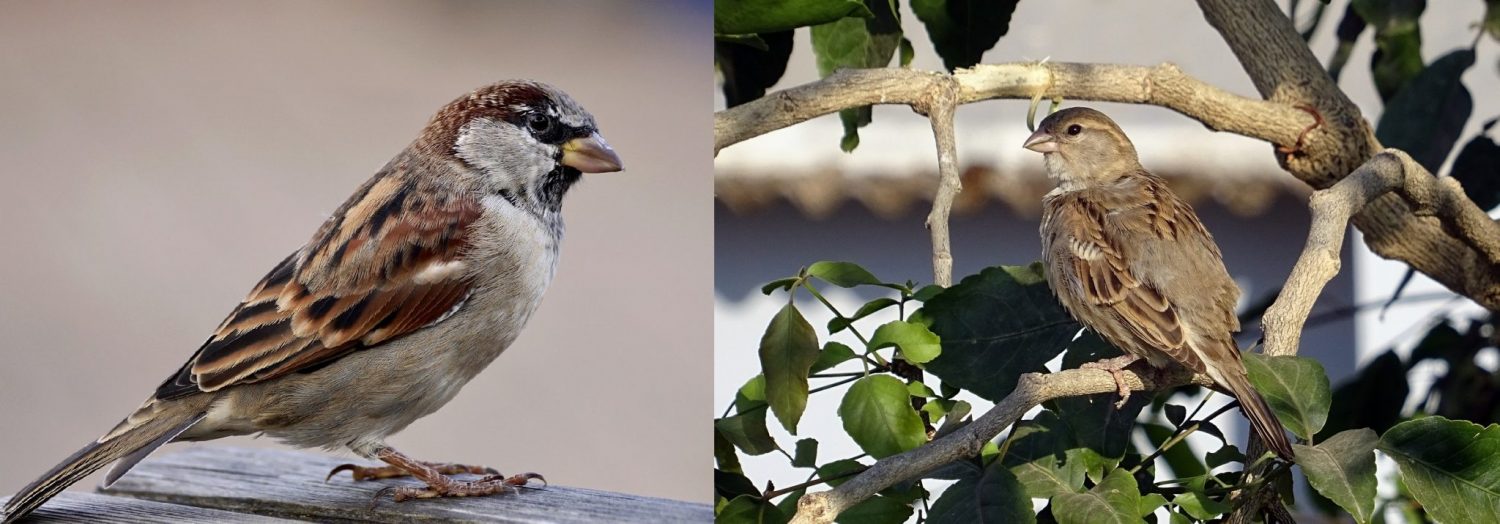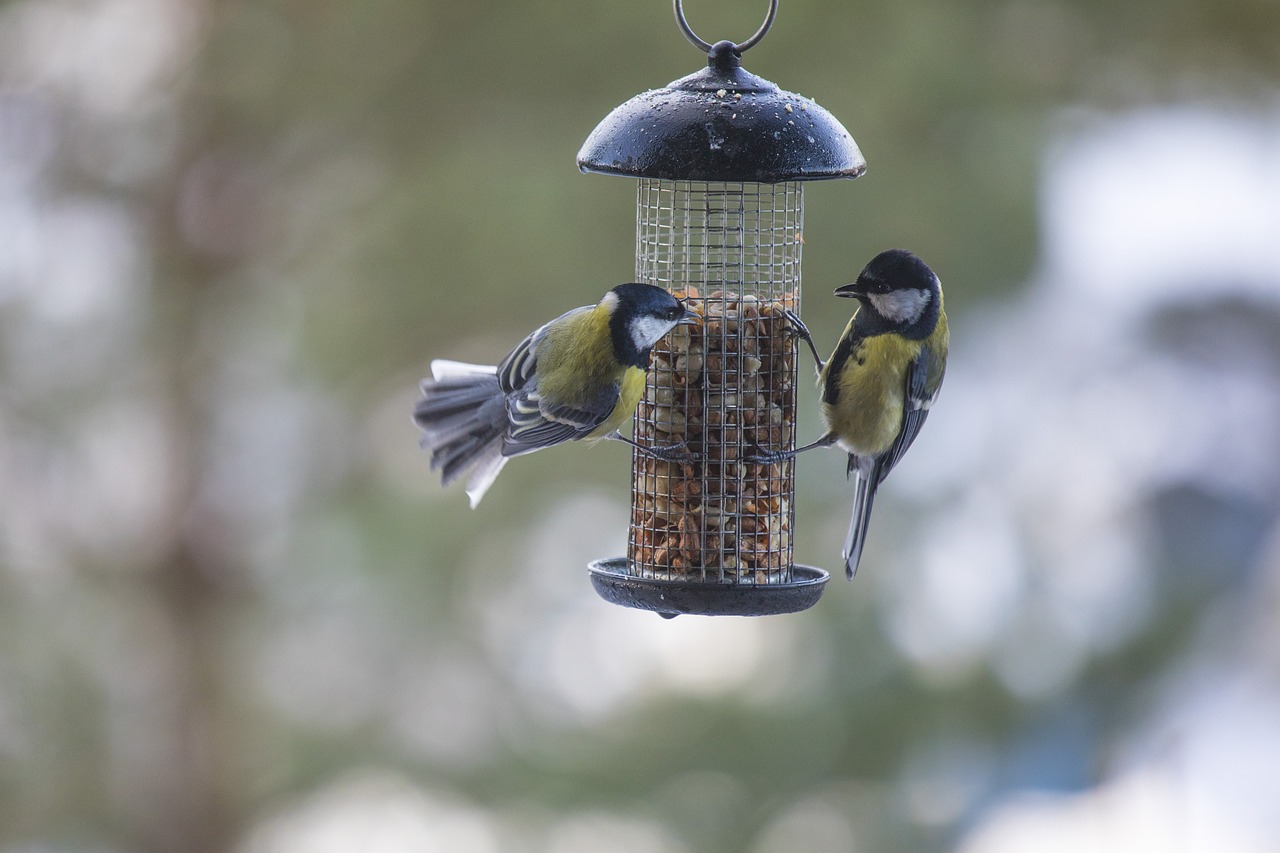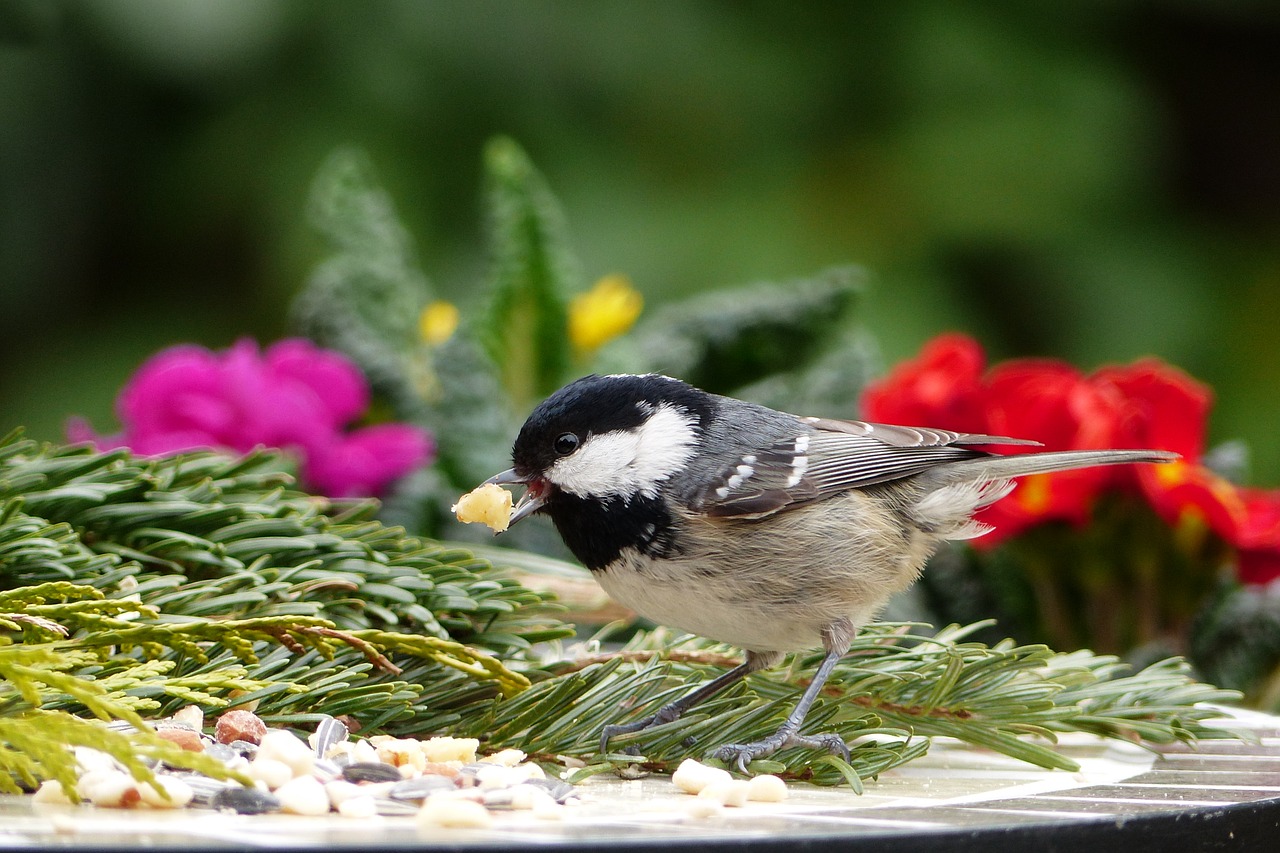International Dawn Chorus Day falls on first Sunday of May. This is the perfect time for bird watching, as our feathered friends build their nests and new families of birds arrive in our gardens. But do you recognise all of our feathered visitors?
Our bird vocabulary EFL lesson explores the most common garden birds, learning their names, appearances, nesting habits, food preferences and other related bird vocabulary. We’re also exploring bird-related idioms, proverbs and slang phrases inspired by birds, as we prepare for a feathered EFL lesson!
During the Coronavirus pandemic, many people have discovered the joy of bird watching. This simple pleasure has become a major part of some people’s days while at home during lockdown. The discovery of bird watching is one of the silver linings of the lockdown!
International Dawn Chorus Day
On Sunday 1st May 2022, thousands of bird lovers will join the RSPB on Facebook for International Dawn Chorus Day. People share videos and stories about bird song from their own gardens, while learning about the different species of birds.
The ‘dawn chorus’ refers to the sound of lots of birds singing together early in the morning (i.e. at dawn). This is a traditional time for hearing bird song, as the sound travels further when the air is still with little background noise.
International Dawn Chorus Day is a great way to bring bird vocabulary into the EFL classroom. However, as birds are regular visitors to our gardens all year round, we can bring this relevant natural world topic into the classroom at any time of year.
Birds Vocabulary EFL Lessons
In the springtime, the gardens in the UK become heavily populated with birds looking for food, declaring their territories, seeking a mate and getting ready for nesting. This time of year is fantastic for wildlife lovers and birders.
The summer is another wonderful time of year for spotting new arrivals in your garden as baby birds are fledging and families of birds search for food together.
For autumn and winter bird vocabulary EFL lessons, we can explore the migration of UK garden birds as they seek warmer climates. This can include thinking about the food foraging habits of winter garden birds and how we can help them with feeding.
Now we’re at the start of summer, we’re ready to fly with our ideas for a garden birds EFL lesson! Sit back with your binoculars and take a look at some of our dearest feathered visitors.
Read on to learn more about bird feeding and nesting habits and prepare bird vocabulary for a conversation class that celebrates nature and birding.
Blue Tit
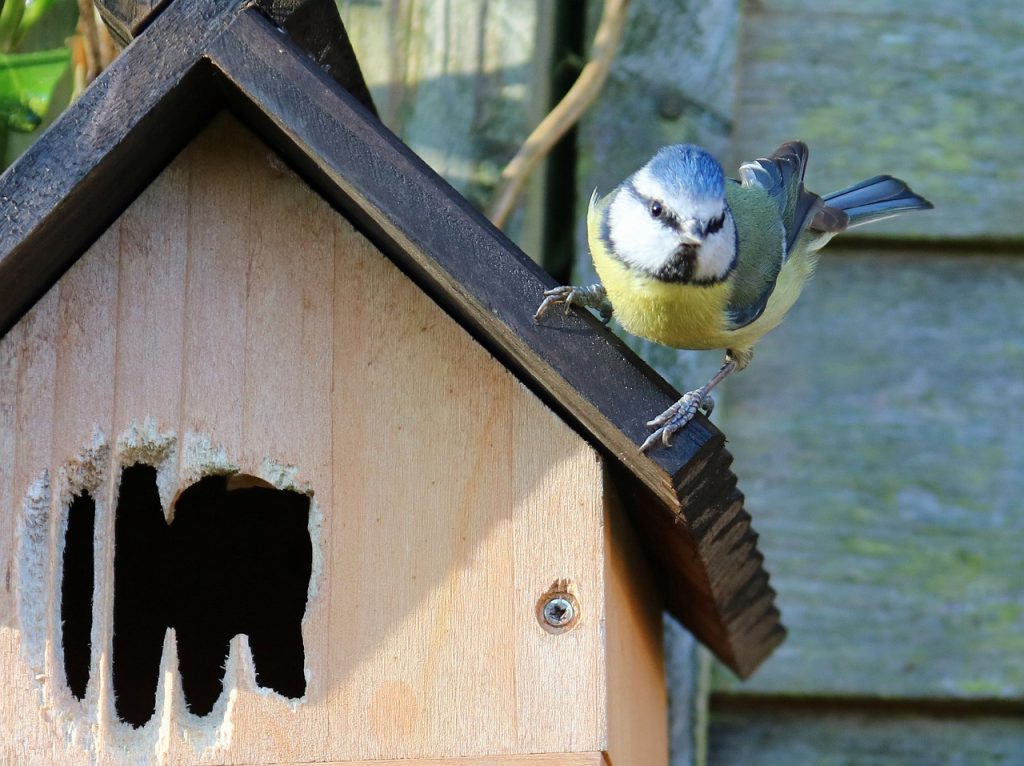 The blue tit is one of the most common garden visitors in the UK. This colourful character has blue, yellow and green feathers and whistles a sweet song. These birds are skilful at gripping onto vertical feeders to eat seed mixes and crushed peanuts, while they also enjoy suet balls in winter.
The blue tit is one of the most common garden visitors in the UK. This colourful character has blue, yellow and green feathers and whistles a sweet song. These birds are skilful at gripping onto vertical feeders to eat seed mixes and crushed peanuts, while they also enjoy suet balls in winter.
Blue tits sometimes find a quiet place to sit on a branch to eat larger seeds while holding them with their feet! They are common inhabitants of garden nest boxes, often nibbling around the entrance as they set up home.
You can hear these lovely birds throughout the spring and summer with their medium-pitched trilling song.
Robin
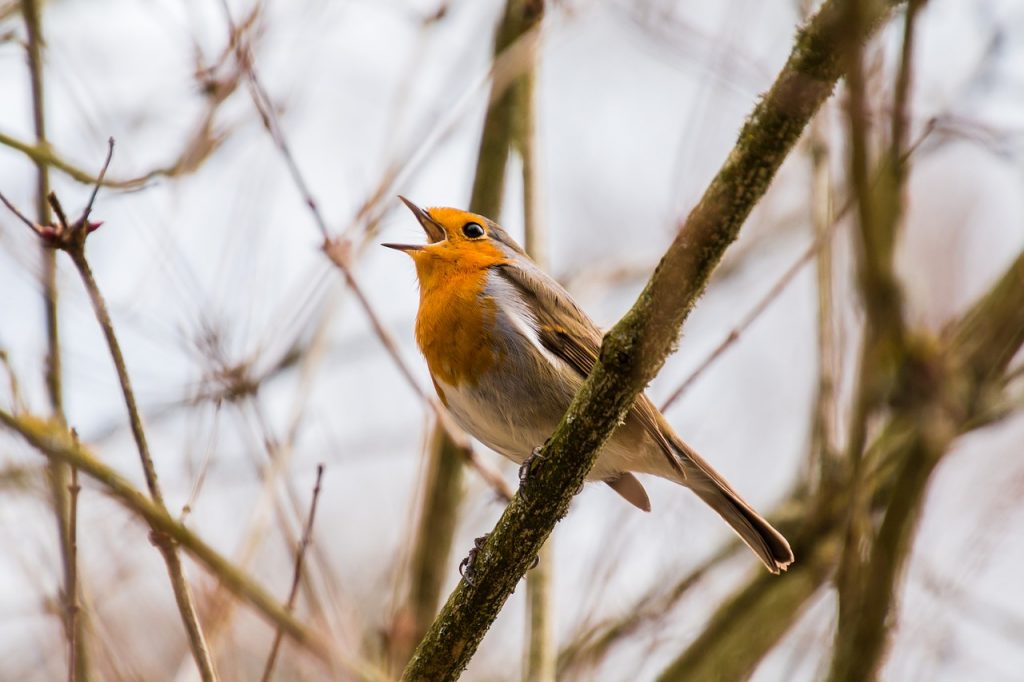
Robins are among the most recognisable bird in UK gardens with their bright orange-red breast. These sweet singers are bold and adventurous, often perching or pecking on the ground near humans in the garden.
They are slightly larger than blue tits and have a rounded shape, especially in the winter when they fluff up their feathers to trap in extra heat against the cold weather.
Robins are ground feeders and love eating mealworms, while they will also feast on seed, suet, kibbled peanuts and raisins.
These bold little birds are known for building nests in unlikely places. A nest box should be open-fronted to attract a robin, unlike a blue tit’s nest box which should be closed fronted. Robins have a strong and varied singing voice and sing throughout the year to protect their territory.
Blackbird
Blackbirds are one of the best-loved garden birds in the UK. The female blackbird (above right) has a brown plumage with slight speckling and a brown-yellow beak, while the male blackbird (above left) has black feathers, a bright yellow beak and yellow eye ring.
Blackbirds have a beautiful, melodic song with a ‘fluty’ tone. This is our favourite singing voice of all the garden visitors! However, if a cat prowls nearby, listen out for their ‘ground predator’ warning call, which is a series of rapid, intense cheeps. This alert warns nearby birds of the approaching threat.
Blackbirds enjoy eating seed, mealworms, insects and soft fruits, and they prefer to feed on the ground. In nesting season, the female will build the nest and brood the eggs, often choosing a thick hedgerow for protection, while both the male and female will feed the chicks.
These characterful birds often have multiple broods in one nesting season, usually using a new nest for each brood. Young blackbirds are speckled brown and are sometimes confused with thrushes.
House Sparrow
The house sparrow is a popular garden visitor and a skilled balancer on hanging feeders. The male house sparrow (above left) has a black patch on its face and throat with vibrant colouration on its back and wings and a pale breast. The female (above right) has a pale brown throat is soft brown all over with a streaky back.
House sparrows have a short stout beak, ideal for pecking at tough seeds and nuts. These birds don’t sing a melodic tune like blackbirds or robins, instead they vocalise with a series of simple chirrups. Sparrows enjoy eating various seeds, insects and tender plant parts.
Worryingly, house sparrows have declined by 71% in British gardens over the last 30 years and they are now a ‘red listed’ conservation species (this means they are endangered).
More countryside birds are turning to urban gardens in search of food, so putting out seed feeders and fresh water is a great way to help these increasingly rare beaked visitors.
Wren
Wrens are one of the smallest birds in the UK. They are round in shape with brown speckled feathers and a fine tail which is angled almost vertically. One of our best garden songbirds, they have a beautiful voice, which is surprisingly powerful for such a little bird!
Wrens are highly active birds and the males will build several nests in the spring with the female choosing which to use. Wrens love to dine on insects, such as caterpillars, while spiders are also a favourite meal.
These little birds make tiny, cup-shaped nests in trees, while they also use regular nest boxes for nesting and roosting. They sometimes roost in groups and 60 wrens have been recorded together in one nest box!
Goldfinch
Goldfinches are beautiful to look at with a vibrant red face and yellow and black wings. They are known for loving niger (or nyjer) seed and will happily eat this tiny black seed all day long! Goldfinches also eat small plants, such as thistles and dandelions – their delicate beaks are able to extract small seeds from flowers with great precision.
These sleek and colourful birds can be seen in the UK in summertime but they will often migrate to Spain for the winter in search of warmer weather.
Male and female adult birds look similar, while juveniles have brown plumage without the distinctive face colouration of the adults.
Great Tit
The great tit is larger than the blue tit with a black head and white cheeks. They sport a black stripe down their fronts and a single white stripe on their wing. These birds like to eat seeds, insects, suet and berries and are skilled at hanging from vertical feeders, just like their blue and yellow relatives.
These birds have a high-pitched, two-note song, which can be quite loud and persistent. The great tit is an abundant species across the UK and likes to nest in cavities in trees. They often have two broods each year and both parents raise the young.
Great Spotted Woodpecker
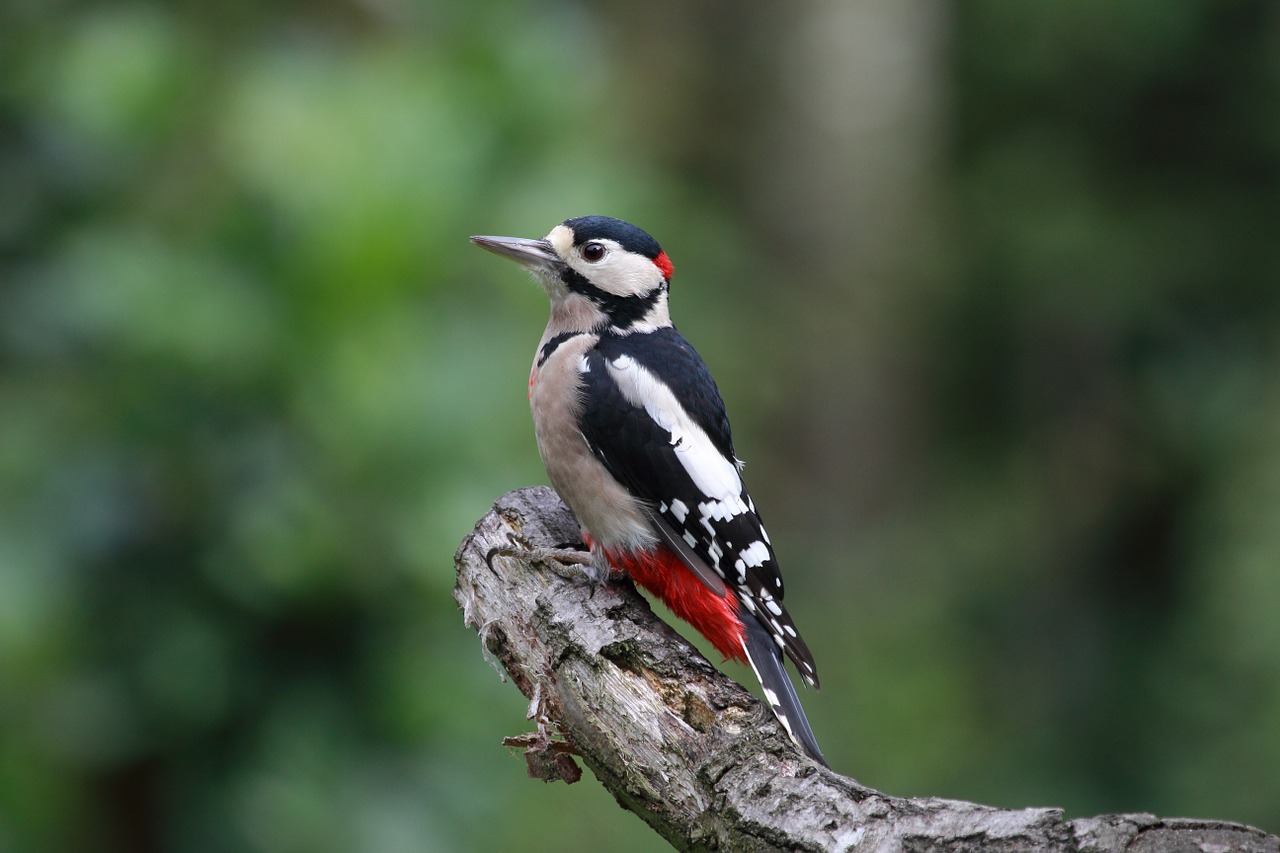 The great spotted woodpecker is a striking bird with black and white feathers and a bright red patch on its lower body. The male also has a red patch on the back of his head, while the female’s head is black and white without a red patch. The juvenile bird has a red cap on the top of its head, which turns black as it gets older.
The great spotted woodpecker is a striking bird with black and white feathers and a bright red patch on its lower body. The male also has a red patch on the back of his head, while the female’s head is black and white without a red patch. The juvenile bird has a red cap on the top of its head, which turns black as it gets older.
Great spotted woodpeckers are similar in size to blackbirds and their favourite foods are wood-boring insects, such as beetles, which they peck out from tree bark. They are also skilled balancers and can use peanut feeders and suet ball feeders in UK gardens for an easy meal.
Great spotted woodpeckers are different from most birds because instead of singing, they ‘drum’ / peck rapidly on a tree. This is their individual way of establishing their territory, attracting a mate, hollowing our a nesting spot and finding food.
These birds like to nest in soft wood trees, such as willow or birch, and prefer dead wood as it is easier to peck.
Coal Tit
Coal tits are fawn in colour with white cheeks, grey back and a black head. They are not as colourful as other members of the Tit family, lacking the dazzling blue of the blue tit and the bright yellow of the great tit.
These little birds are rounded in shape and slightly smaller than their blue relatives. They have a slender beak, which allows them to delicately excavate small seeds.
Coal tits are known for taking food to store later in crevices in buildings and gardens (and they sometimes forget where they left it!) Their song is similar to the great tit but higher in pitch and less persistent.
Dunnock
Dunnocks are quiet birds who like to stay near to the ground and close to hedgerows. These unobtrusive garden visitors are similar in appearance to female house sparrows, as both have light brown feathers and are roughly the same size.
However, it is possible to tell the difference between a female house sparrow and a dunnock if you look closely. The dunnock has a grey head and bib with a long, thin beak, in contrast with the brown bib and short beak of the sparrow.
Dunnocks are ground feeders, so they are most comfortable pecking around the shrubbery and flowerbeds, looking for small worms.
In the springtime, the female constructs a nest (sometimes dunnocks also use the old nests of other birds) and will lay a clutch of four or five blue-coloured eggs. Once hatched, both parents will feed the young and fledglings will leave the nest after about two weeks.
Wood Pigeon
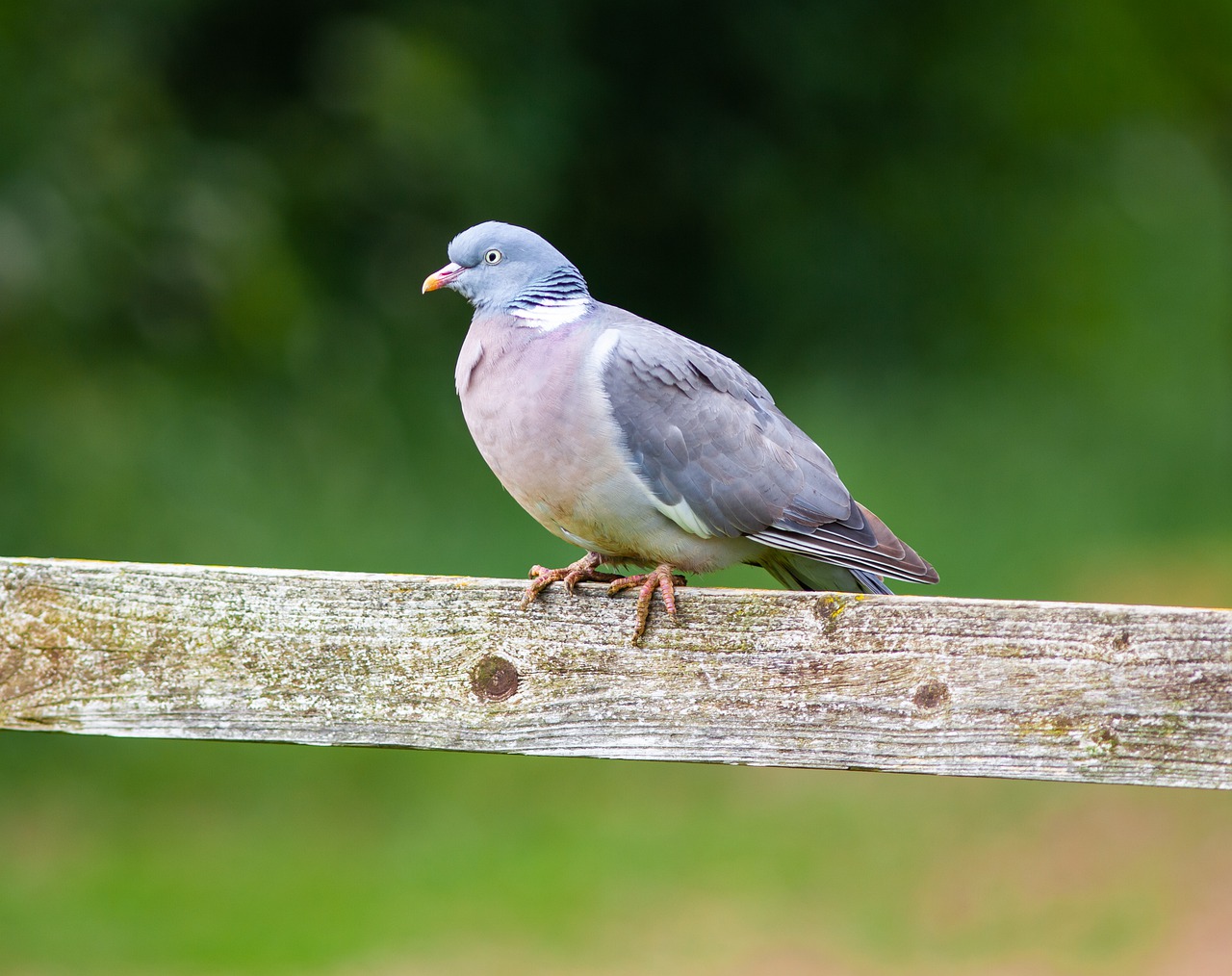 The wood pigeon is the largest member of the pigeon family and one of the most common garden guests. These birds have a distinctive cooing sound, which they use to communicate with each other and defend their territories.
The wood pigeon is the largest member of the pigeon family and one of the most common garden guests. These birds have a distinctive cooing sound, which they use to communicate with each other and defend their territories.
Wood pigeons are mostly white and grey with a mauve-coloured front. They can be quite noisy when taking off in flight with much flapping of their wings.
Pigeons are voracious feeders and will eat most foods, including seed, grain, berries and plant materials. Due to their large size, wood pigeons are suited to eating at ground feeders. These birds nest in trees or large bushes and tend to have two eggs in a clutch, which both parents take turns to incubate.
Unlike most birds, wood pigeon young are fed on special milk created in both the female and male parent’s crop lining, which is much thicker and richer than mammals’ milk. After hatching, the young birds fledge in about one month, by which time they are almost adult sized (this is why most people don’t realise they have seen a baby pigeon!)
Magpie
Magpies are noisy, highly intelligent birds with a black and white body and a long black tail. Their black feathers have a slightly green hue on closer inspection. The magpie call is a harsh cawing sound, similar in style to the rest of the crow family.
Magpies defend a territory of around 12 acres all year round, but not all these birds breed every year due to limited nesting sites. Magpies tend to gather in flocks and can occupy a zone of 50 acres, sometimes forming pairs within their flock.
These monochrome birds like to eat grain, seed, berries and carrion – they will even eat pet food. They will also catch their own small mammals to eat, such as mice and even hatchlings from other nests.
Female magpies usually lay six blue spotted eggs and the male feeds his partner on the nest. Both parents feed the chicks and the young birds fledge after around one month.
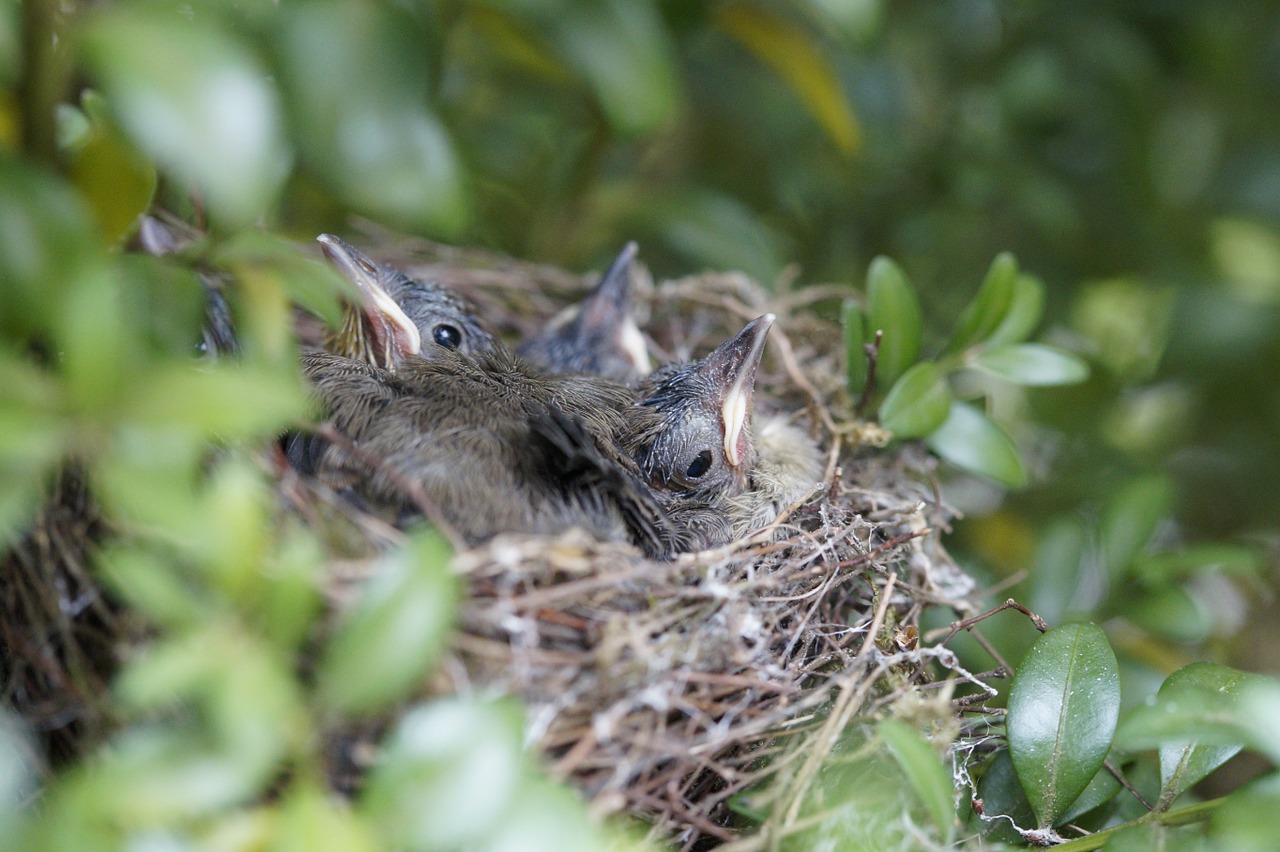
These young birds in their nest are almost ready to fledge – image source
Garden bird vocabulary EFL lesson
There are many words and phrases related to birds that are perfect for use in a birds vocabulary EFL lesson. This can be ideal for any time of year, as birds have different habits throughout the seasons, although spring and summer are perhaps the best times to discuss UK garden birds.
For a garden birds EFL lesson, teachers can present vocabulary from our list of useful bird related words and phrases. Students can try to use the words in sentences about garden birds, using our bird descriptions above as a guide.
Bird vocabulary can be tested by getting students to fill in the missing words from an article about birds. This type of EFL comprehension check is a good way to ensure students have understood new vocabulary.
Speaking skills can be tested by a conversation lesson or by assessing role plays, letting one student interview the other about their bird watching activities.
Teachers can read out an article or simply list some interesting facts about garden birds to test the students’ listening skills. The students should have a list of questions and they must use their listening abilities to pick out the relevant information and answer the questions.
Students can use our garden birds vocabulary to answer questions and add more information of their own.
These ideas should all help to create an entertaining and useful garden birds vocabulary EFL lesson!
Birds vocabulary and phrases for EFL lessons
Feathers – the soft outer covering of a bird’s body
Plumage – feathers
Tail – long back feathers
Beak – the mouth of a bird, a hard pointed structure used for eating, pecking and grooming (also called a ‘bill’)
Wing – the body parts of a bird used for flying. These are two flapping structures that stick out at the sides (wings are also on planes)
Birdsong – the melodious sound a bird makes to protect its territory, announce its presence and attract a mate
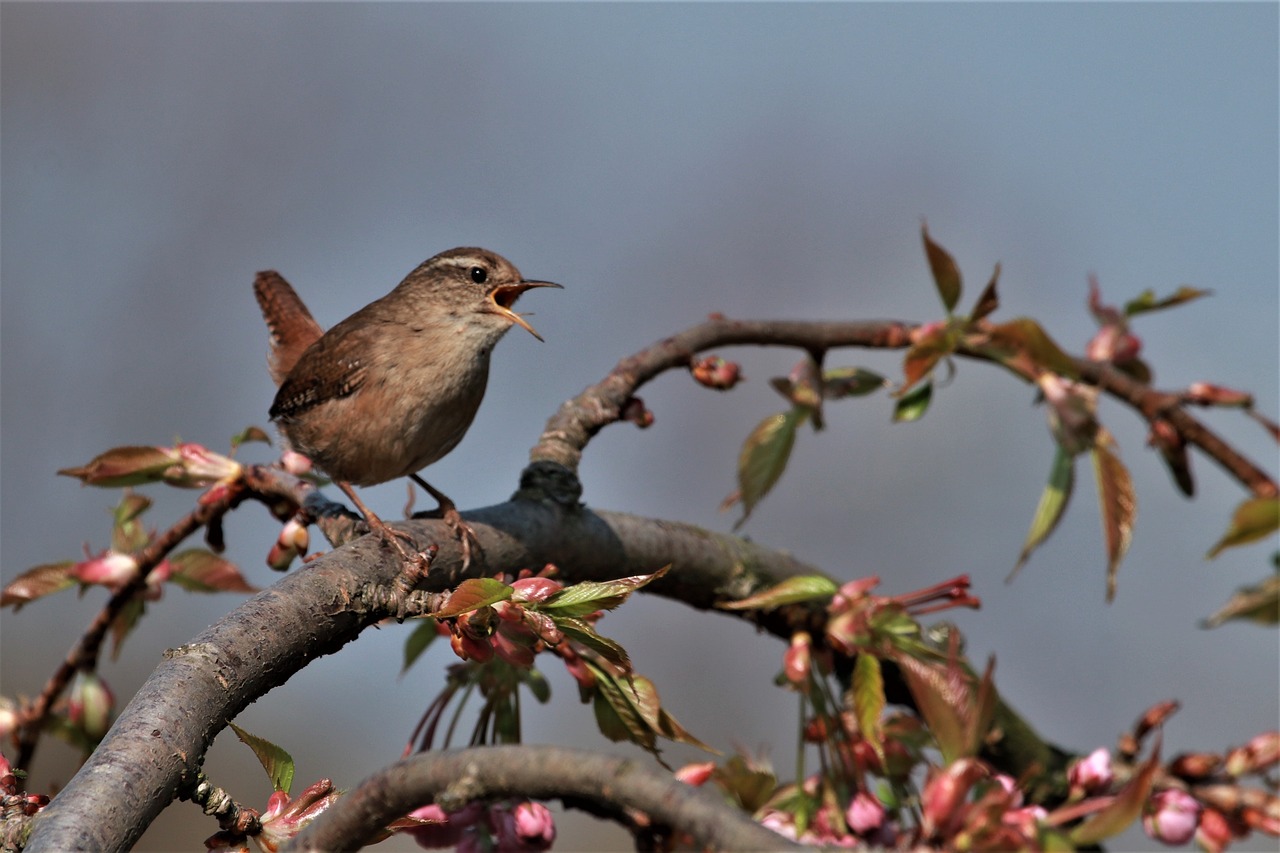
Wrens have a powerful singing voice – image source
Chirrup – short sharp noises birds make to communicate, also called tweets or cheeps
Warning call – a sound birds uses to warn each other about nearby predators (birds have different sounds for ground predators, such as cats, and aerial predators, such as owls)
Call – a sound birds make to communicate or to alert others
Song – a sound birds make to defend their territory and attract a mate (male birds are known for singing, but 70% of female songbirds also sing)
Coo – the soft sounds of pigeons and doves
Caw – the harsh calling sounds of magpies and other members of the crow family (e.g. crows, ravens, jackdaws, jays)
Dawn chorus – the sound of bird song on a spring morning when all the bird species are singing together
Peck – short sharp stabbing motions of the beak. A bird’s head jerks forward to peck the ground or peck at food
Drumming / hammering – short rhythmic movements of the beak. Woodpeckers drum against a tree to excavate a nest or find insects – drumming is their version of singing
Nest – the home birds create to house their eggs, made from various materials such as sticks, grass, leaves, hair and mud
Eggs – female birds lay the eggs and a single chick will hatch from each egg after a period of incubation
Incubate – the act of sitting on the eggs. The bird sits on the eggs to incubate them (keeping them warm) until they hatch
Hatch – when the chick breaks through the eggshell to be born
Brood – to incubate (verb) / a group of chicks from one nest (noun)
Clutch – a group of eggs in one nest
Mate – to breed (verb), a bird’s partner (noun)
Hatchling – a newly hatched chick
Nestling – a young chick, slightly older than a hatchling, not yet ready to leave the nest
Fledgling – a chick that has just fledged or is ready to leave the nest for the first time (fledglings may come out of the nest and fly hesitantly or hop around – this is a vulnerable time for birds)
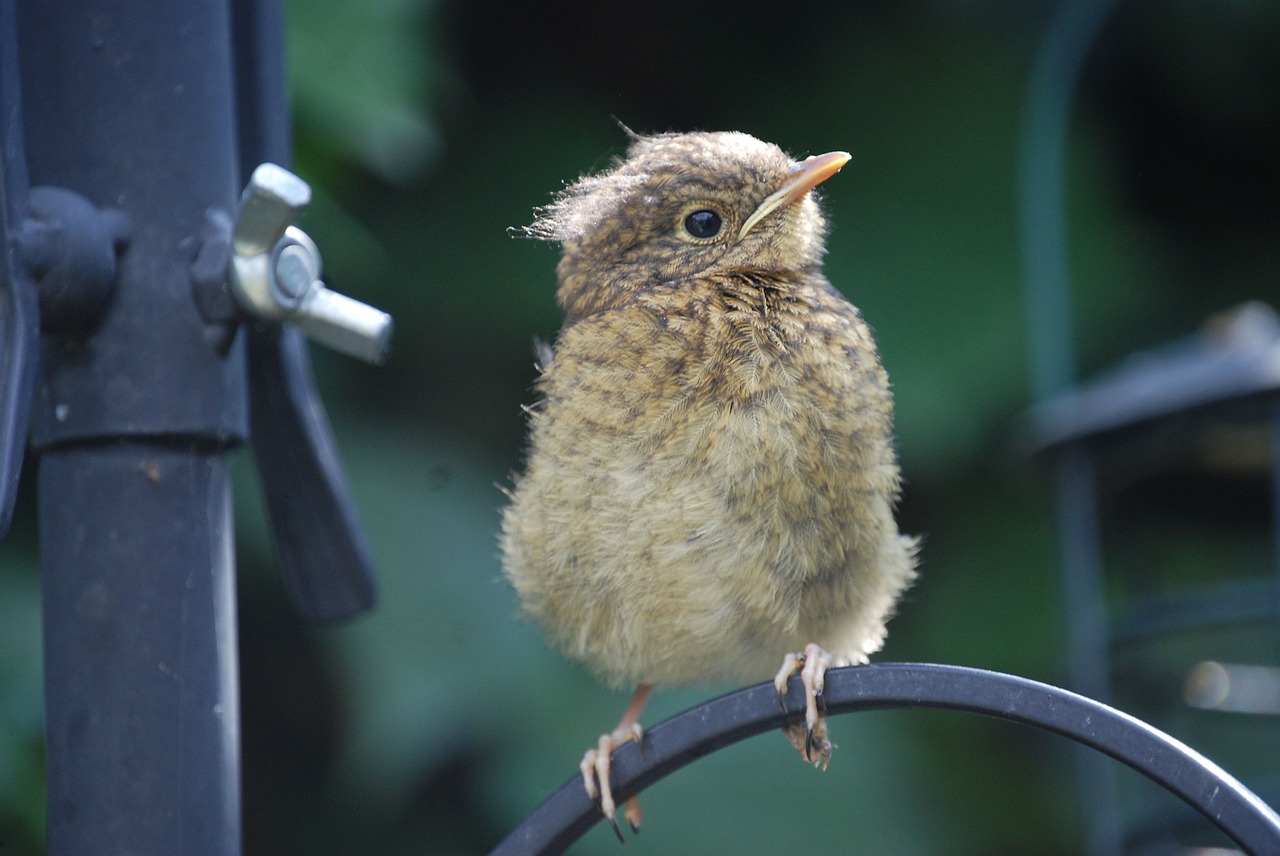
Fledglings are often fluffy because they are still waiting for their adult feathers to develop – image source
Juvenile – a young bird, older than a fledgling but not yet an adult
Fledge – to fly from the nest for the first time (a chick will fledge once its wing feathers are large enough and strong enough to fly. However, new fledglings are only learners and can’t fly well, so they are especially vulnerable to predators)
Chick – a young bird, a new hatchling
Roost – the place a bird rests at night (noun) / ‘to roost’ means to perch or sit somewhere for a rest (verb)
Perch – to sit for a rest (verb) / a place where a bird perches (noun)
Mealworm – the larvae of the mealworm beetle and a great favuorite with garden birds
Seed – there are many seeds that are ideal for birds, including sunflower seed, sunflower hearts, red and white dari, maize, millet, flax and niger seed
Suet balls – suet or fat balls are nutritional supplements for birds, ideal for winter months for their high energy content. Usually consists of beef fat or vegetable oil combined with small seeds, nuts, fruits or mealworms
Feeding Birds
- The RSPB advises feeding birds insects, seeds, soft fruit and soaked mealworms in the summer months. It is best to avoid feeding bread and whole peanuts in spring and summer, as these can be dangerous to hatchlings. Suet balls are better in winter when birds need the warmth and energy from the fat, while a summer diet should focus on protein-rich food. (The RSPB stands for the Royal Society for the Protection of Birds, a UK charity founded in 1889).
Berries – small soft fruits that appear in the summer, such as blackberries and raspberries. Strawberries are larger berries, while bananas and grapes are also part of the berry family. Most birds enjoy soft fruit and dried fruit, such as raisins and currants.
Ground feeder – a ‘ground feeder’ is a type of bird that likes to feed from the ground (e.g. robins, blackbirds, dunnocks, wood pigeons) / this can also describe a feeding station or plate that holds bird food and is designed to sit on the ground or grass
Hanging feeder / Vertical feeder – a feeder that hangs vertically from a tree or bird feeding station
Take off – when a bird takes flight, begins to fly (a plane can also ‘take off’)
Landing – when a bird lands back on the ground after flying (a plane can also ‘land’)
Flock – a group of birds in flight
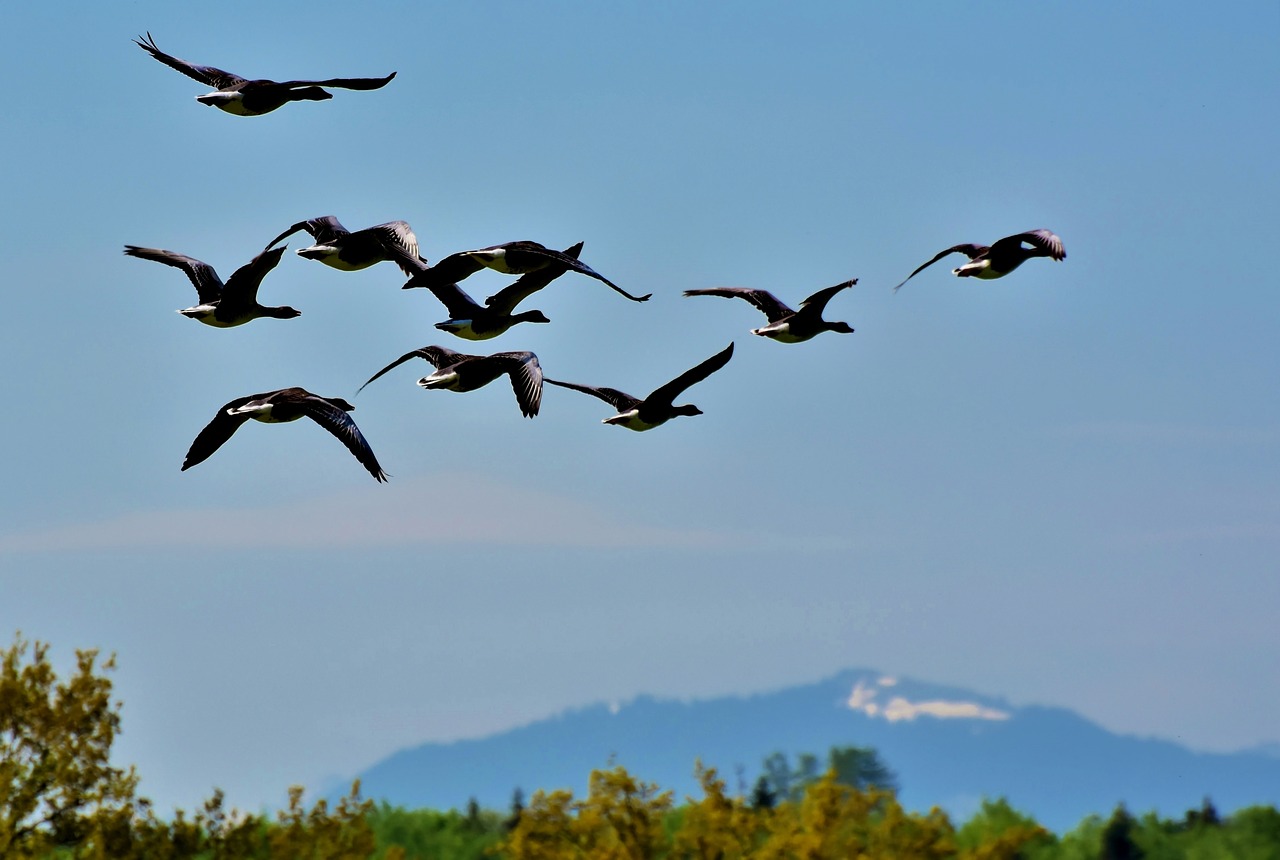
A flock of wild geese – image source
Migrate – to move from one habitat to another according to the seasons. Birds often migrate to warmer climates in the winter months.
Bird watching – the activity or hobby of watching birds
Birding – bird watching
Birder – a bird watcher / person who enjoys watching birds
Twitcher – a bird watcher (slang)
Birds vocabulary EFL lesson – slang and idioms
A bird vocabulary EFL lesson can be a great way to bring nature into the classroom. Students will love discussing their favourite birds and the natural world is a universal topic for great conversation lessons.
Although our birds vocabulary EFL lesson ideas are related to UK garden birds, the general idea can be used to discuss all types of birds and animals. This can also be an interesting cultural lesson related to nature in the UK.
Many of these UK garden birds will also be found in other countries, while students will also enjoy learning about the different species and common birds native to each other’s countries.
A birds vocabulary EFL lesson can also act as a springboard to discussing other types of native wild animals and popular pets. For example, we have interesting resources for a lesson about elephant communication, dog-related vocabulary for a Crufts EFL lesson, and ideas for a class exploring how baboons have shed light on the evolution of language.
For teachers keen to focus on a bird-vocabulary EFL lesson, there are many slang expressions related to birds and general bird life we can use. Some common bird-related idioms, slang words and phrases that can be introduced to the class include:
Bird brain – a stupid or silly person
Wise owl – a clever, wise person
Early bird – a person who likes to get up early in the morning
Night owl – a person who likes to stay up late at night
Cocky – arrogant (a cockerel (British) or rooster (American) is a male chicken)
To crow – to boast (about something) / talk loudly
To lark about – to mess around, do something silly
To be fully fledged / To be a fully fledged (job title) – to be accomplished at something, mature, of full status (e.g. “After completing her qualifications and getting her first job, she is now a fully-fledged computer scientist”)
Sitting duck – an easy target, vulnerable person
Hen party – a party for a bride-to-be, shortly before her wedding
Eagle eye / Eagle eyed – sharp eye, very observant (‘to have an eagle eye’ or ‘to be eagle eyed’)
A bird’s eye view – a view from above
To go cold turkey – to stop doing something immediately (as opposed to cutting down gradually)
To have a gander – to have a look (at something)
To charm the birds out of the trees – to behave in a charming manner
To leave the nest – to leave home
As the crow flies – in a straight line (often used when talking about distance by road – e.g. it’s only about 20 metres as the crown flies, but the meandering roads mean you’ll have to drive much further to get there)

Distances are shortest ‘as the crow flies’ – image source
Bird – woman (old-fashioned UK slang – in modern times mildly insulting)
Chick – woman (US slang, similar to ‘bird’ in the UK)
Cock of the walk – a highly confident, proud person to the point of being arrogant (slang) (E.g. “Look at him – he thinks he’s cock of the walk!”)
To feather your nest – to make money out of something or to do something that benefits yourself, perhaps selfishly (E.g. “I thought he was going to help, but he’s only interested in feathering his own nest”)
Empty nester – parents whose children have left home (when the house feels empty without the children, parents might have ’empty nest syndrome’, a feeling of loneliness)
A feather in your cap – an achievement to be proud of
A good egg – a good, moral person (an old-fashioned English expression)
A wild goose chase – a pointless or fruitless search or quest
A little bird told me – we say “a little bird told me” when we have been told a secret but we don’t want to reveal who told us
Wouldn’t say boo to a goose – If someone wouldn’t say “boo” to a goose it means they are very timid (Traditionally we say “boo!” to scare or surprise someone, usually while jumping out from a concealed place)
Bird similes for EFL lessons
- Similes are figures of speech used to make a description more powerful, emphasising a certain characteristic, quality or situation.
As light as a feather – very light in weight or insubstantial
As bald as a coot – completely bald / someone or something with no hair
As dead as a dodo – something that is dead or obsolete (a dodo was a flightless bird, now extinct)
As free as a bird – totally free with no worries
As happy as a lark – very happy and carefree
As sick as a parrot – very disappointed

A blue and yellow macaw, a South American parrot – image source
Bird proverbs for EFL lessons
- Proverbs are well-known sayings, usually giving advice or stating a generalised truth. Some proverbs related to birds include:
“The early bird catches the worm” – start early to achieve success
“A bird in the hand is worth two in the bush” – its better to have what you already possess than risk losing it in the attempt to acquire something better
“Birds of a feather flock together” – people who have similar values or interests tend to stick together and get along well with each other
“To put all your eggs in one basket” – to place all your hopes and efforts on one course of action or one person (it’s risky to have all your eggs in one basket).
“What’s good for the goose is good for the gander” – what is acceptable behaviour for one person should also be acceptable behaviour for the other (a gander is a male goose)
Explore more proverbs in English and pop these into a conversation to sound like a native!
Share your thoughts on garden birds
Do you feed the birds in your garden? What are the most common species of birds in your garden?
What type of food do you put out for the different species?
Do you enjoy bird watching? Can you recognise different birds’ songs?
Can you think of more bird-related slang phrases or idioms?
What would you include in a birds vocabulary EFL lesson?
Let us know in the comments!

